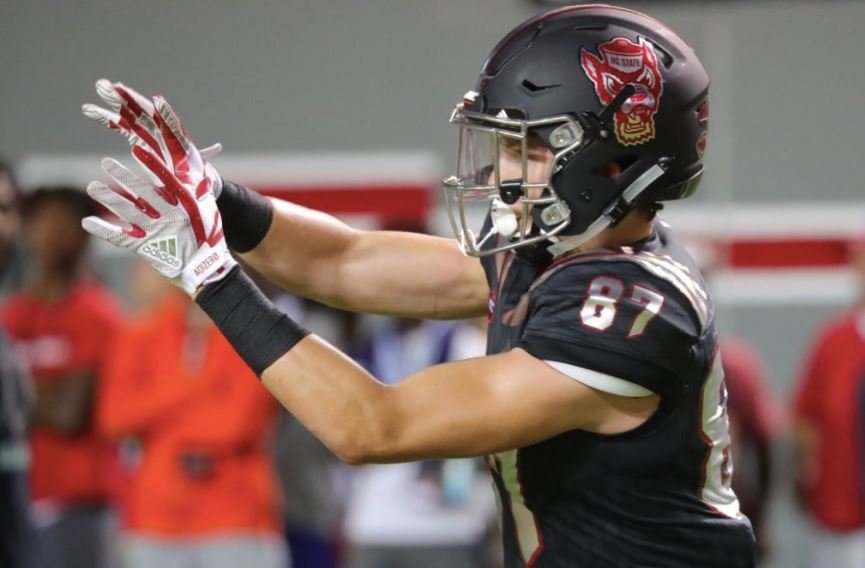High school football can be highly competitive, but sometimes the difference in skill levels between teams can lead to lopsided scores. To address this, many states and football organizations implement a mercy rule to prevent excessively one-sided games from becoming discouraging or unsafe for the losing team. Is there a mercy rule in high school football? Yes, in most states, there is a mercy rule that can help shorten games or reduce play intensity when one team holds a significant lead. In this article, we’ll explore what the mercy rule is, how it works, and the ways it impacts high school football games.
What Is the Mercy Rule?
The mercy rule is a rule used in various sports to limit the duration of a game when one team has built an insurmountable lead over the other. In high school football, the mercy rule often involves modifying the game clock to speed up play and reduce the chance of further scoring. This approach helps prevent an already lopsided game from becoming even more one-sided, protecting players’ morale and safety.
While the specifics of the mercy rule can vary depending on the state or league, the core idea is to bring the game to a quicker conclusion when one team is dominating. The rule is often applied by instituting a running clock, which continues to run with few stoppages, reducing the overall length of the game.
How the Mercy Rule Works in High School Football
In most high school football games, the mercy rule is applied when a team gains a lead by a certain number of points. Here are the general guidelines for how it’s typically implemented:
Point Differential
The mercy rule usually goes into effect when a team is leading by a large margin, typically 35 to 40 points or more, depending on the state. For example, in some states, the rule activates when one team leads by 35 points or more at any point during the second half. In others, it may start when the lead reaches 40 points, with variations in timing depending on local regulations.
Running Clock
Once the mercy rule is activated, a running clock is often used for the remainder of the game. This means that the clock will not stop for most traditional stoppages, such as incomplete passes, plays out of bounds, or changes in possession. The clock only stops for timeouts, injuries, or official timeouts.
The running clock speeds up the game significantly, reducing the number of plays and the overall time spent on the field. This approach minimizes further scoring and keeps the game moving quickly, allowing the losing team to exit the game sooner, potentially reducing frustration or discouragement.
Timing and Implementation
The timing for implementing the mercy rule varies by state and league. In most cases, it goes into effect during the second half of the game, particularly in the third or fourth quarter. This timing helps ensure that both teams have had an opportunity to compete in the first half before the rule is applied. In some states, if the point differential is reduced (for example, if the losing team scores and cuts the lead to fewer than 35 points), the mercy rule may be suspended and regular timing resumes.

State-by-State Variations in the Mercy Rule
The specifics of the mercy rule in high school football vary from state to state, as each state’s athletic association may have its own rules regarding point differential and timing. Here are a few examples of how different states handle the mercy rule:
California
In California, the mercy rule goes into effect when a team is ahead by 35 points or more at any point in the second half. Once activated, a running clock is used for the rest of the game. The clock only stops for timeouts, injuries, or at the officials’ discretion. If the point differential falls below 35 points, regular timing is reinstated.
Texas
Texas high school football follows a similar approach, with the mercy rule activating at a 45-point lead in the second half. Once the lead is established, the game continues with a running clock. Texas schools can also opt to end the game early if both coaches agree, further shortening the game.
Florida
In Florida, the mercy rule is applied when a team leads by 35 points or more during the second half. At this point, a running clock is implemented, and the game proceeds without most clock stoppages. The mercy rule is common in Florida to maintain sportsmanship and reduce the chance of injury.
Ohio
Ohio’s mercy rule, also called the Point Differential Rule, activates when a team gains a 30-point lead in the second half. The running clock remains in effect until the end of the game unless the trailing team narrows the lead to fewer than 30 points, at which point the rule is suspended.
New York
In New York, the mercy rule is less common but can be applied on a case-by-case basis, depending on the game situation and the judgment of the officials. Some leagues in New York follow a 40-point differential rule for varsity games, with a running clock starting in the second half.
Why the Mercy Rule Matters
The mercy rule plays a valuable role in high school football by promoting sportsmanship, protecting player morale, and reducing injury risk. Here are some reasons why the rule is important:
Sportsmanship and Respect
High school football emphasizes not just athletic skill but also character development. The mercy rule helps foster good sportsmanship by encouraging teams to respect their opponents, even in situations where they may be dominating the game. Rather than running up the score, teams are encouraged to play respectfully and avoid unnecessary scoring once the mercy rule is in effect.
Player Morale
For the team that’s trailing by a large margin, an extended game with continued scoring can be demoralizing. The mercy rule helps mitigate this by limiting the opportunity for further scores and speeding up the game’s conclusion. This allows the players to leave the field with dignity, knowing they put forth their best effort without facing an unnecessarily prolonged defeat.
Injury Prevention
In lopsided games, players on the losing team may feel discouraged or frustrated, increasing the risk of reckless or careless play. The mercy rule helps reduce this risk by shortening the game and limiting the number of plays, which can reduce the chances of fatigue-related injuries. It also allows coaches to rotate in less experienced players, helping to prevent injuries to starters.
Time Efficiency
The mercy rule makes the game more efficient by minimizing time on the field, especially when the outcome is no longer in question. This is beneficial not only for the players but also for officials, fans, and support staff. By implementing a running clock, the game wraps up more quickly, allowing everyone to conclude the event in a timely manner.
Criticisms and Limitations of the Mercy Rule
While the mercy rule has its benefits, some argue that it has limitations and can affect player development and competition.
Reduced Playing Time
One criticism of the mercy rule is that it reduces playing time for both teams, especially younger or backup players who may only get game experience during the second half. In games where the mercy rule is applied, these players may have fewer opportunities to develop and demonstrate their skills, limiting the team’s depth and future talent.
Potential Impact on Competition
In some cases, the mercy rule may impact the competitive spirit of the game. Coaches may be reluctant to play aggressively or fully utilize their game plan, which can influence the development of strategy and team dynamics. For teams that are winning, this can mean holding back and playing at a reduced intensity, which may affect their overall performance in future games.
Inconsistent Application
Because the specifics of the mercy rule vary by state and league, there can be inconsistencies in how it is applied. In states where it’s enforced differently or not at all, teams may face different expectations and experiences, which can lead to confusion for players, coaches, and fans. Additionally, some leagues may allow coaches to waive the mercy rule, while others mandate its use, leading to variability in game experiences.
FAQs
When does the mercy rule usually take effect in high school football?
In most states, the mercy rule takes effect in the second half, typically when one team has a lead of 30 to 45 points. The exact point differential and timing can vary depending on the state’s regulations.
Can the mercy rule be turned off if the score gap narrows?
Yes, in many states, if the trailing team reduces the point differential below the mercy rule threshold, regular game timing resumes. This gives the trailing team a chance to close the gap and potentially mount a comeback.
Does the mercy rule apply to all high school football games?
The mercy rule is commonly used in regular-season high school football games and varies by state. However, some states may modify or waive the rule for playoff games, allowing them to continue with regular timing regardless of the score.
Do college and professional football have a mercy rule?
No, college and professional football leagues, such as the NCAA and NFL, do not have an official mercy rule. These games are played to completion under standard rules, regardless of the score differential. In professional leagues, sportsmanship and player management are handled by the coaching staff rather than through a rule-based approach.
Can coaches choose to end the game early under the mercy rule?
In some states, coaches can mutually agree to end the game early if the mercy rule is in effect and both teams are satisfied with the outcome. This option may be available at the discretion of the referees or the league, depending on local regulations.
Are there alternative ways to manage lopsided scores besides the mercy rule?
Yes, some leagues encourage coaches to rotate in younger or less experienced players once a significant lead is established, which reduces scoring without requiring a mercy rule. Others encourage conservative play-calling to run down the clock, allowing the game to finish respectfully while maintaining the competitive spirit.
Conclusion
In summary, the mercy rule is a useful tool in high school football, designed to limit the duration of games with significant score differentials. By implementing a running clock and reducing opportunities for further scoring, the mercy rule promotes sportsmanship, protects player morale, and reduces injury risks. While it may have some limitations, the mercy rule is widely accepted as an effective way to ensure fair and respectful play in high school football. Coaches, players, and fans should be aware of their state’s specific mercy rule guidelines to understand how it impacts game timing and strategy.





